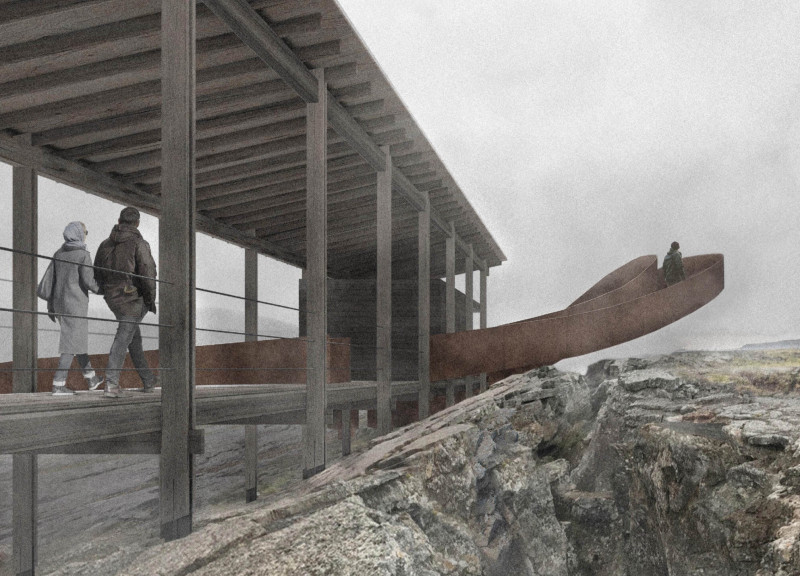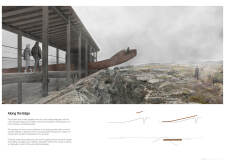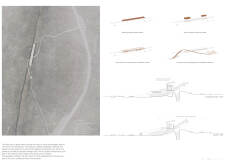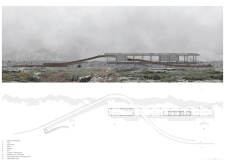5 key facts about this project
“Along the Edge” is an architectural design located at the boundary of the European and North American continental plates. The project explores the natural features of this unique setting. It prominently features a pitched roof that aligns with the slope of the land. A wooden walkway hovers above the ground, allowing visitors to traverse the area while preserving the landscape's original character.
Structural Design
A flowing ramp serves a significant role in the design, crossing the crevice and creating a separation between two main areas: the ticketed entrance for Kvennagjá cave and the open-access Karlagjá cave. This ramp is essential for guiding visitors. It directs movement throughout the site, and it provides an opportunity to view the surrounding scenery.
Visitor Experience
The entrance layout is designed to manage visitor flow effectively. A higher banister on one side ensures added privacy for those entering Kvennagjá. This thoughtful design choice allows for distinct experiences in each section, helping to control the number of people and the interactions they have within each space. The arrangement promotes an easy transition between the two caves while maintaining the scenic quality of the area.
Environmental Features
Rainwater is collected using the pitched roof, which channels water into a storage tank. This feature illustrates a commitment to environmentally friendly practices. The design also includes various functional spaces such as a café, offices, and outdoor viewing areas, enriching the experience for those who visit. These elements are integrated into the overall plan while keeping the project aligned with its natural surroundings.
Accessibility and Interaction
The elevation of the structure allows for interior spaces to emerge from the slope, creating a sense of lightness in the design. The ramp serves as both a path and a visual link back to the crevice, enhancing how users interact with the landscape.
Attention is paid to mechanical systems and water management, ensuring that functionality is part of the design. These systems work in harmony with the architecture, reflecting a focus on practical use without overshadowing aesthetic goals.
Final details such as an observation area complete the experience. This space encourages visitors to take a moment to appreciate the geological features and their surroundings, inviting a deeper connection with the environment.






















































